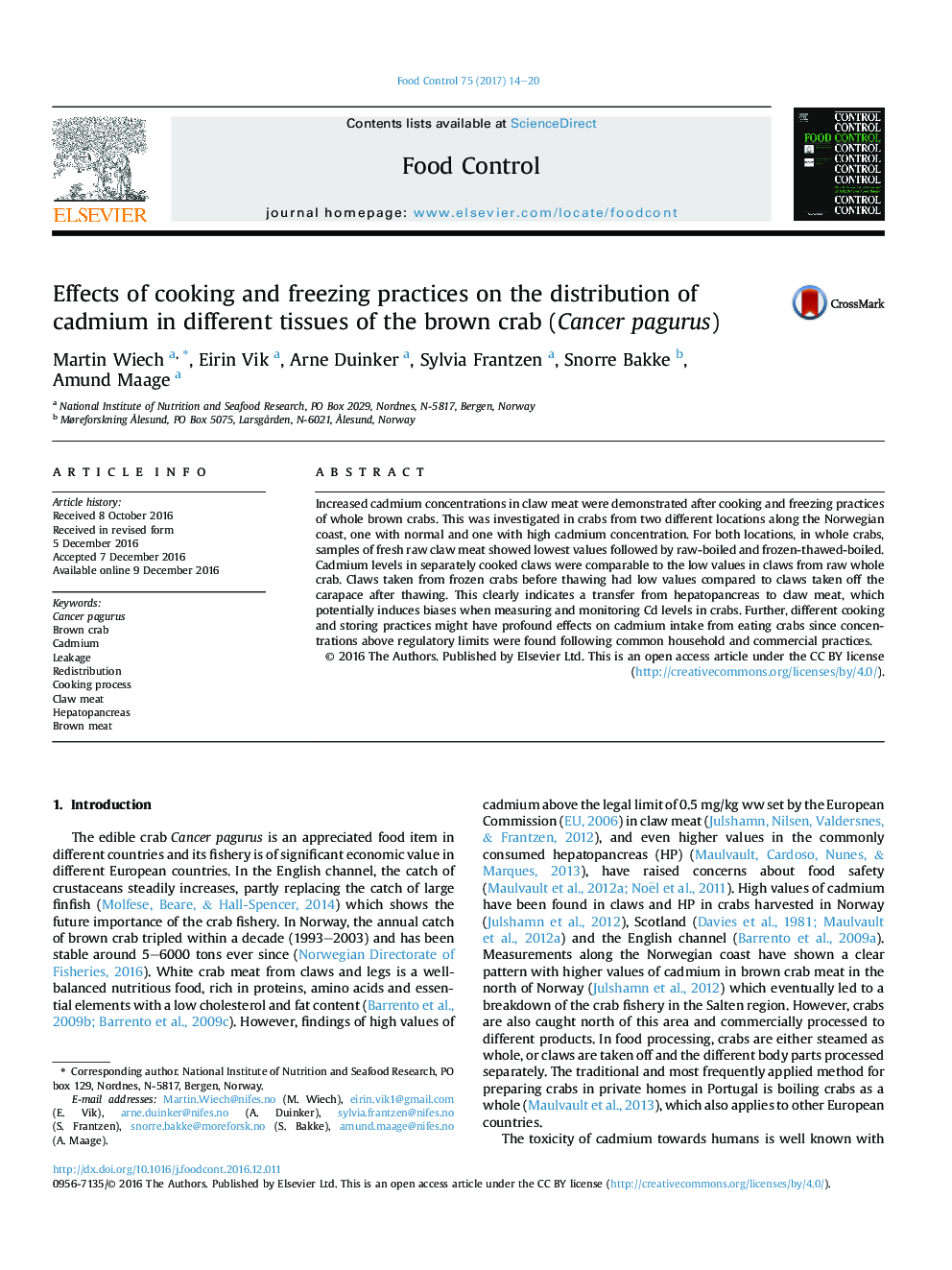| Article ID | Journal | Published Year | Pages | File Type |
|---|---|---|---|---|
| 5767385 | Food Control | 2017 | 7 Pages |
â¢Cooking and freezing/thawing caused a redistribution of Cd in the edible crab.â¢The redistribution led to increased Cd levels in claw meat.â¢Hepatopancreas was identified as the main source of the leakage.
Increased cadmium concentrations in claw meat were demonstrated after cooking and freezing practices of whole brown crabs. This was investigated in crabs from two different locations along the Norwegian coast, one with normal and one with high cadmium concentration. For both locations, in whole crabs, samples of fresh raw claw meat showed lowest values followed by raw-boiled and frozen-thawed-boiled. Cadmium levels in separately cooked claws were comparable to the low values in claws from raw whole crab. Claws taken from frozen crabs before thawing had low values compared to claws taken off the carapace after thawing. This clearly indicates a transfer from hepatopancreas to claw meat, which potentially induces biases when measuring and monitoring Cd levels in crabs. Further, different cooking and storing practices might have profound effects on cadmium intake from eating crabs since concentrations above regulatory limits were found following common household and commercial practices.
